Saint Spyridon is considered to be the patron of craftsmen in Bulgaria – shoemakers, brick-makers, potters, tailors etc. No matter the fact that each craft has its own patron saint, December 12th has been known as Craftsmen Day ever since the Renaissance.
While listening to the fiesta outside, crafts masters used to hold their degree certification exams on this day. Marieta Nedkova explains why it is important to maintain traditions in crafts and what the place of ancient-technology-made products is in modern reality:
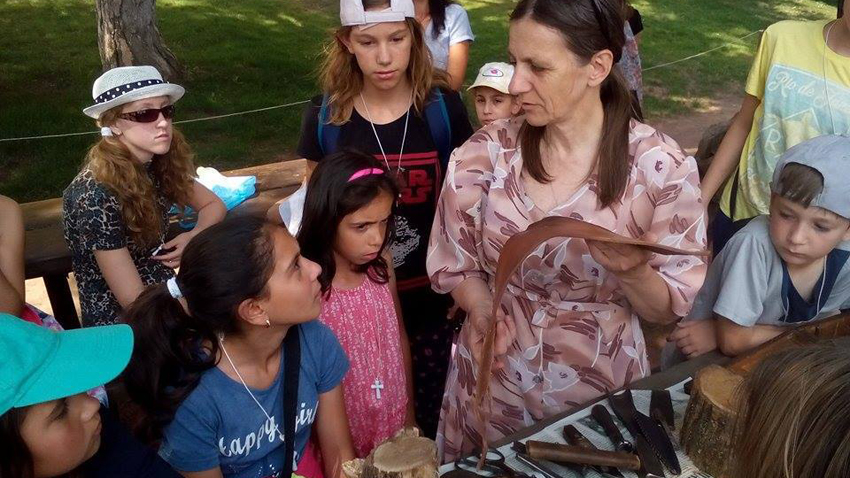
“Those create individuality and style, they talk about a person’s temper and way of living, about his or her sense of aesthetics. Some handmade accessory with your clothing changes the vision, especially if it has been exclusively designed. We know that handmade objects are made of everlasting materials and are passed over from one generation to another. The craftsman puts in not only hard work and skill, but also knowledge in terms of tradition in the material’s treatment and the artistic design.”
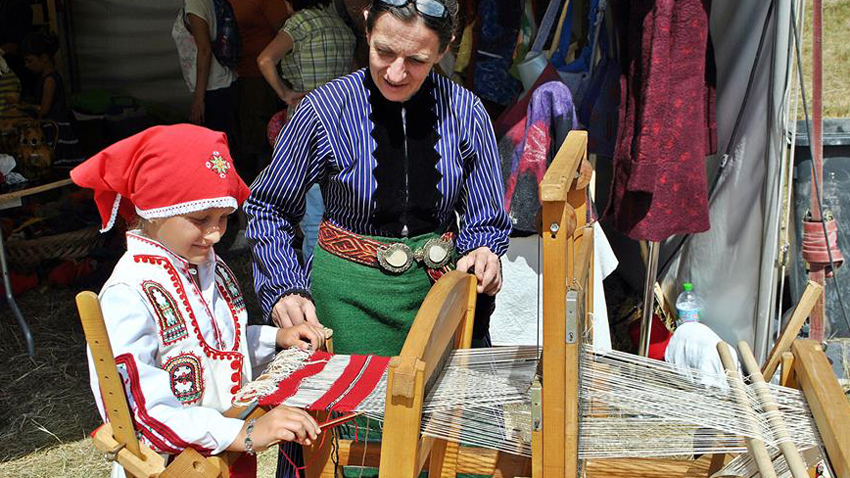
Marieta is a second-generation master, skilled in a couple of crafts. She has learned the technology of working leather from her father. She is known for her deep knowledge about “plasti” (the Bulgarian word for felt) – or non-woven textile. She knows ancient technologies of not only this craft. She is good with different kinds of weaving looms and is one of the few people who can weave with tablets. She also designs and prepares the patterns for the ornaments – the toughest task in this ancient art.
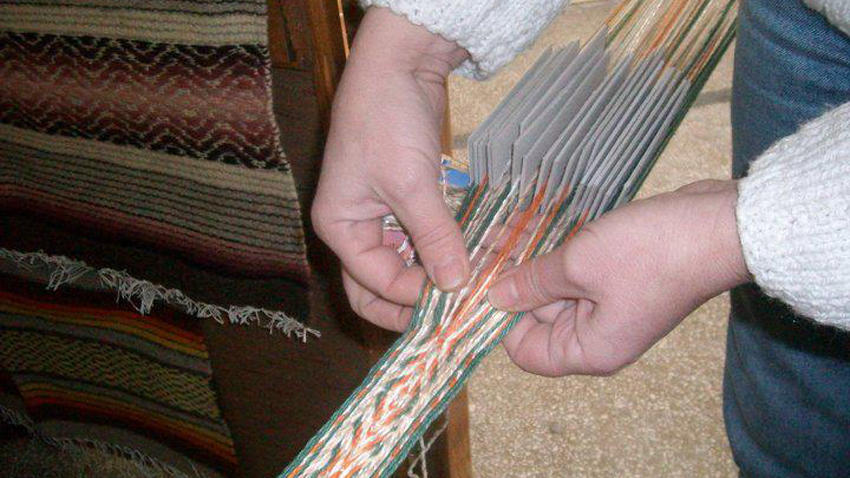
“Weaving by using tablets is a skill that is almost extinct today. It is a pretty laborious work bu whoever decides to try – it helps develop one’s sense of space and mathematical thinking. That is why this technique is suitable for children’s workshops and demos. It is hard to display a real weaving loom at a festival, while the tablet weaving requires only four tablets (nowadays made of cardboard, but existing in the past made of thin wood or bone) with holes in their four ends through which the threads are filed. This ancient technique existed all over the world, in these lands it came from Asia, most likely. It appeared simultaneously with the first vertical weaving looms with weights – in the 6th – 5th c. BC. Such artifacts have been dated back to that period. The Asian peoples use even today textile bands, tablet -woven, for tying felt roof covers to their tents, for tying their animals and for many other daily life usages. The larger number of tablets you use, holding different colors of thread, the more complex and exquisite the patter would be. For example Egyptian Pharaoh Ramzes II was buried with a belt, created with the help of over 300 tablets, with lots of colors, golden threads included – pretty impressive for that time. Few People in Bulgaria know this technique, although the Internet provides detailed info, but cannot aleays reveal the secrets of the patterns’ creation. I saw once TV coverage about an elderly woman from a remote village, walking around the place weaving with tablets. One end of the threads was tied to her waist, while the other end she tied either to a tree or to the door, taking her time to chat with people while working.”
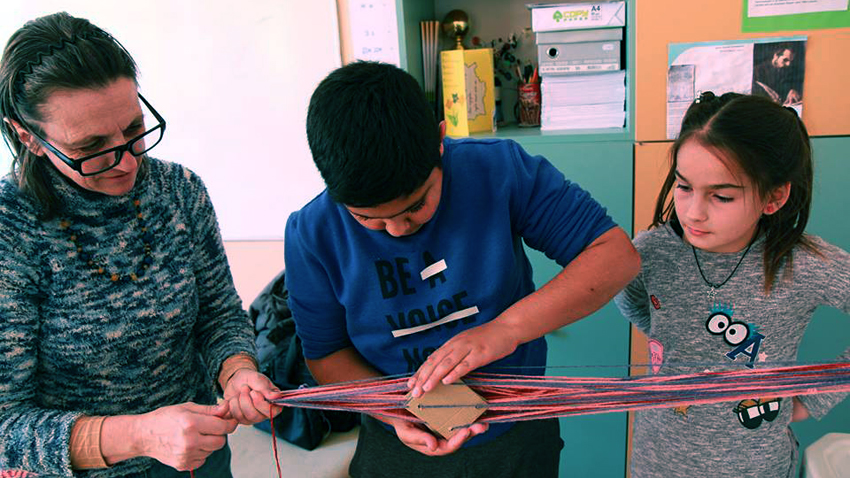
What is the implementation of these ancient techniques today, when even folklore singers and dancers opt for stylized versions of the traditional folklore clothing? Things have been changing and so have the usual consumers of crafts production.
“At the same time there are these people who enjoy making historical recreations and order replicas of ethnographic objects,” Marieta says. “These are the various clubs and youth societies. They try to feel the ancient way of living. I have made leather replicas for such enthusiasts, but it is hard to do it with the felt wool technique. We get information about it from ancient sources like woodprints and icons. In Bulgaria there are no ancient craft objects actually found and preserved, they are only mentioned in different literature sources, so I don’t really know how they looked. Nearly 4,000-year-old felt fabrics have been found at a mound excavations in Altay. The site had been robbed shortly after the funeral and water penetrated inside. So, the textiles got frozen in this natural freezer and were preserved till our time. Both craftsmen and artists opt for different installations with this applied technique, as they find it to be an interesting performance field. It is used for making clothes, shoes, shawls, gloves among others. It is also used for making carpets and other artistic installations.”
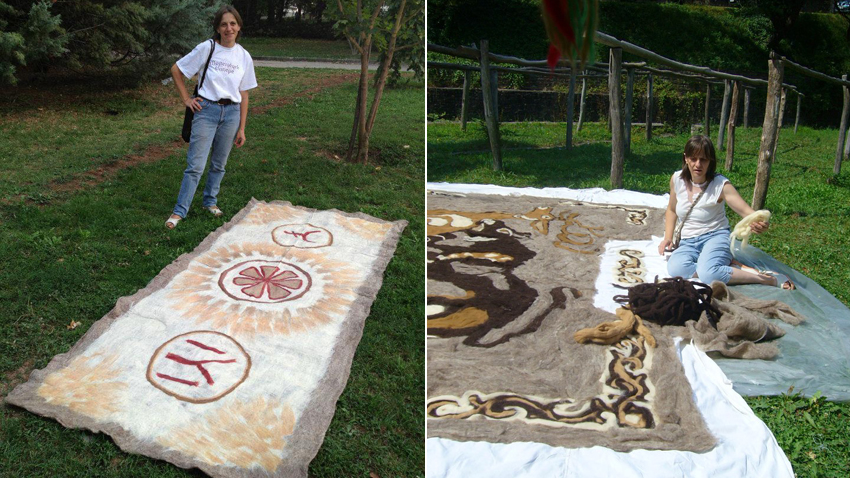
Marieta is also a hard-working teacher – she has being invited to offices and schools across the country and she manages to find the suitable occupation for people of any age, attracting their interest to the wonder of making something with your own hands and imbibe it with the beauty and incomparable sense of feeling your roots.
Photos: courtesy of Marieta NedkovaPrayer served by His Holiness Bulgarian Patriarch Daniil on February 22, marks the beginning of the celebrations for the consecration of the new church "St. John of Rila" of the Bulgarian Orthodox community in London. For the..
"Thracians, Wine and Culture" is the theme of a seminar at the archaeological complex "Valley of the Thracian Kings" near Kazanlak , which brings together scholars and researchers from all over Bulgaria on February 22. This is the ninth edition of..
Help me do it myself, get me in touch with nature, take care of my immunity – these are the principles that the teachers at the Bulgarian kindergarten "Hristo Botev" in the Slovak capital Bratislava follow. The kindergarten has been operating since 2009..
Exactly 3 years ago, on February 24, Russia’s invasion of Ukraine began – an event that woke up Europe 77 years after the end of World War II and called..

+359 2 9336 661
